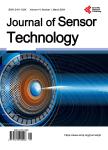Modeling, Simulation and Experimental Studies of Refractometric Fiber Optic Sensor
Modeling, Simulation and Experimental Studies of Refractometric Fiber Optic Sensor作者机构:Department of Electronic Science Abasaheb Garware College Pune India Department of Electronic Science Savitribai Phule Pune University Pune India
出 版 物:《Journal of Sensor Technology》 (传感技术(英文))
年 卷 期:2023年第13卷第1期
页 面:1-11页
学科分类:08[工学] 081101[工学-控制理论与控制工程] 0811[工学-控制科学与工程] 081102[工学-检测技术与自动化装置]
主 题:Refractometric Fiber Optic Sensor Mathematical Modeling Ray Tracing Technique
摘 要:Refractometric fiber optic sensors have a number of applications in industry due to advantages like remote sensing ability, compact size, easy to fit, etc. A refractometric sensor contains a pair of parallel fibers and a gap between the sensor probe and reflector, wherein the liquid whose refractive index is to be measured is filled. This paper describes the importance of mathematical modeling of this sensor. Ray tracing approach is used to model the sensor mathematically. This mathematical model is generalized for any scenario which is useful to avoid tedious trial and error techniques to design the sensor prototype. Mathematical modelling is a useful tool to optimize the gap distance for a detection of refractive index of liquid. The model is developed and analyzed rigorously considering adulteration of diesel by kerosene where refractive index varies from 1.44 to 1.46. Simulation experiments are carried out to optimize the gap distance which is found to be 6.8 mm using both models. Experiments are carried out where sensor probe is fabricated and results are analyzed. It is observed that for suggested gap distance sensor output varies almost linear over the entire range.



